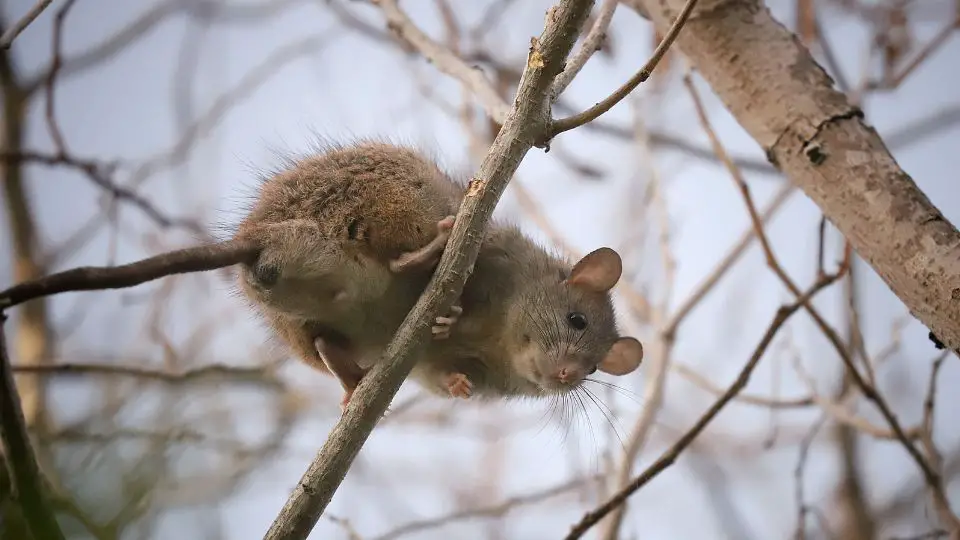Roof rat droppings are a tell tale sign of a rat infestation. Other signs include shredded nesting material, chewed holes in walls or baseboard, foul odors, noises in the wall or attic, and gnaw marks on food packages.
Rats are notorious for chewing through drywall and gaining entry to homes and other buildings via tiny entryways. Not only are they a nuisance, but they can also be a host of diseases and fleas that can endanger your family.
Various types of rodents that can invade your property. So, how do you know if you have a rat infestation? Let’s examine the signs your property has a rat problem.
Table of Contents
6 Signs of a Rodent Infestation
Read on to learn about the common signs of a rodent infestation in your home.
1. Droppings
One of the first signs of a rat infestation is finding droppings around your home. Rat droppings are typically black or brown and have a tapered shape.
Roof rat droppings look slightly curved with pointed ends. They’re also considerably larger than mouse droppings, which look like pellets and are more oval-shaped.
2. Shredded nesting material
Rats are known to shredding paper and other nesting materials to build their homes. So, if you find shredded newspaper or fabric around your home, it’s an indicator rats are using your abode as their own.
3. Chewed holes
Rats have incisors that grow throughout their lifetime. They love gnawing on things to sharpen their teeth, and your home’s walls and pipes are ideal for it.
Rats are hardy chewers and can easily gnaw through wood, electrical wires, aluminum, and even concrete. If you find small, rat-sized holes around your home, it’s a clear sign rats have made their way inside.
4. Foul odors
Rats tend to urinate and defecate where they nest. This is because they have weak bladders, often leaving behind a trail of urine. They also tend to poop in open areas around or outside of your house, such as your yard, attic, and basement.
5. Noises in the walls or attic
Rats are nocturnal creatures, so you’re most likely to hear a roof rat infestation scurrying around at night. If you start hearing strange noises like scratch and scurrying from your walls, basement, floorboards, or attic—rats are probably to blame.
6. Gnawing on food packaging
City rats have an appetite for almost anything, from sugary foods to pet food. With their keen sense of smell, rats can easily sniff out food that’s been left out in the open or stored in unsealed containers.
And even if you have kept your food in a rat-proof container, they may gnaw on the packaging in an attempt to get to the food inside.
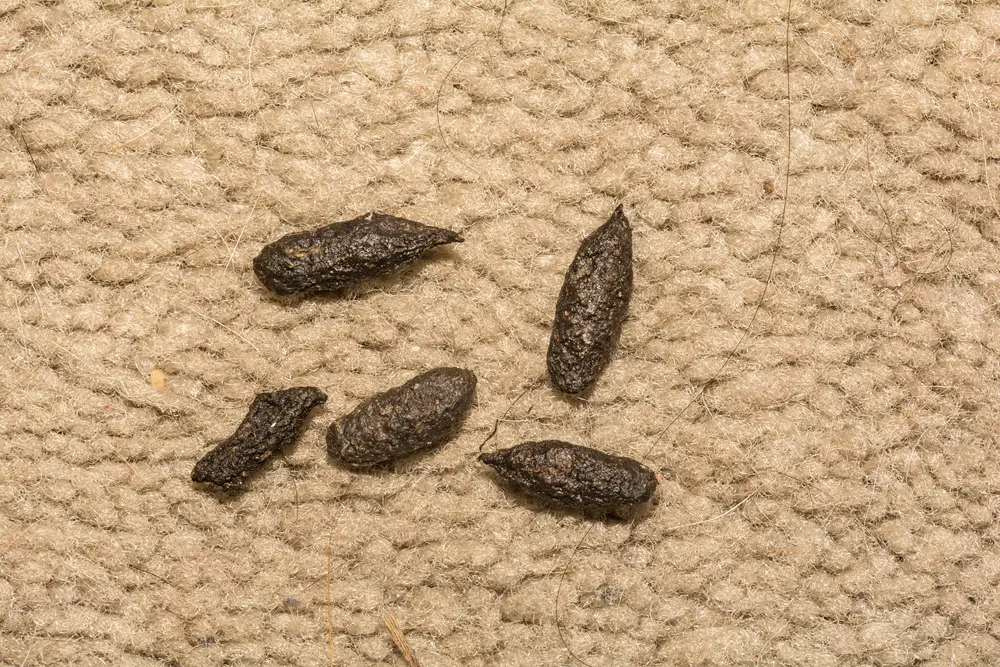
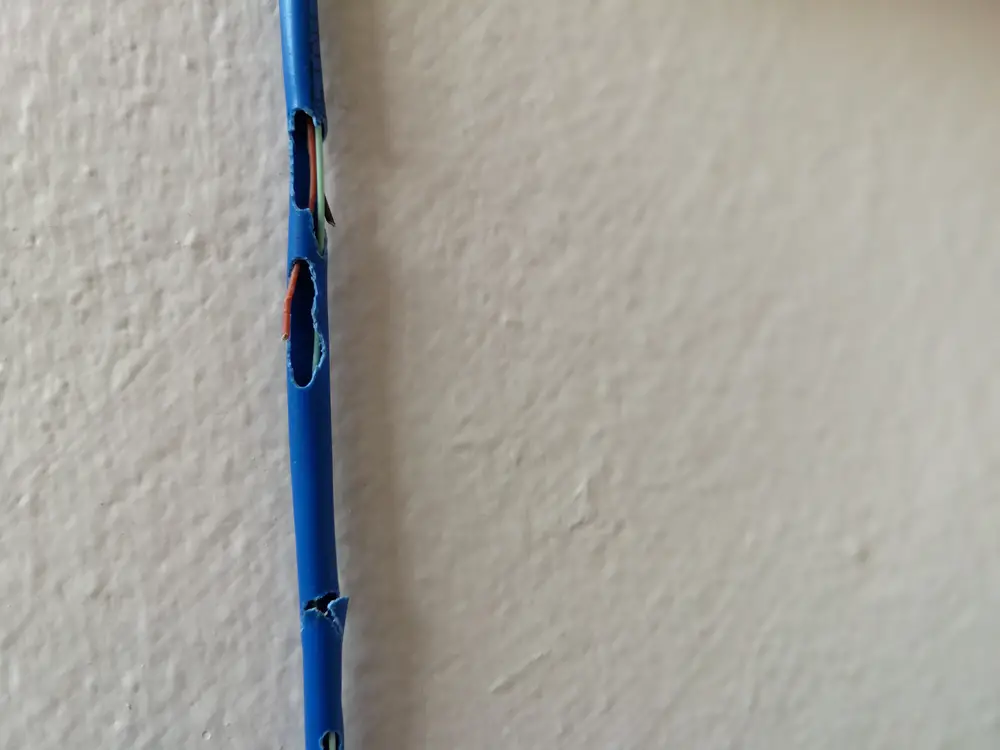
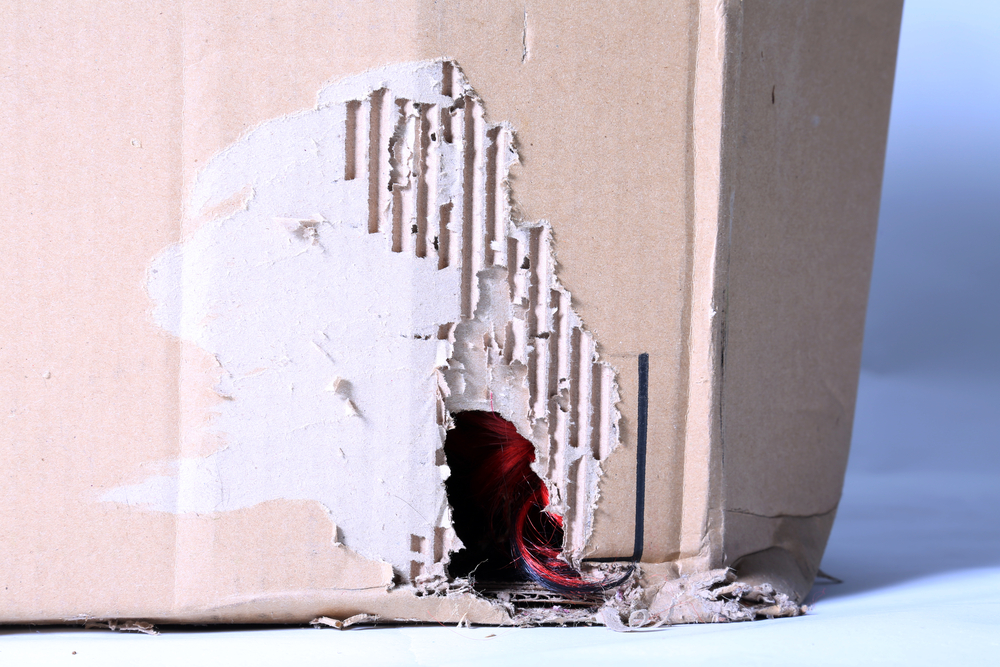
How Do I Know if I Have Rat or Mouse Poop?
There are a few minute differences between rat and mouse droppings that can help you determine which type of rodent is invading your home.
Here are the general characteristics of rat droppings:
- Color: Dark brown for fresh droppings, and gray for older ones.
- Frequency: Rats poop 80 times a day.
- Shape: Looks like a spindle or rice grain, measuring between 1/4 inch to 3/4 inch.
- Location: Rats poop behind pantries, under the kitchen, below the sink, and near food sources.
And here are those of your typical mouse:
- Color: Black poop for fresh droppings, and gray for older ones.
- Frequency: Mice poop 40 times a day.
- Shape: Is curved and has pointed ends.
- Location: Poops near their nest, such as garages, sewers, and other damp places.
What Does Rat Poop Look Like Compared to Mouse Poop?
These two rodents often poop in a pile, so it can be hard to distinguish them if you don’t know what to look for. That said, rat poop is generally smoother and larger than mouse poop.
Mouse poop also tends to have pointed ends. Mouse poop typically measures between 1/8 to 1/4 inch in length, while rat poop is typically 1/2 to 3/4 inches in length.
However, depending on the rat profile, their fecal features may differ. For instance, two of the most common rodent invaders, roof rats and Norway rats, have slightly varying poop profiles.
Roof rats have dark droppings with pointed ends on both sides, while Norway rat droppings are thicker, browner in color, and have blunt sides as evidenced in these rat poop pictures:
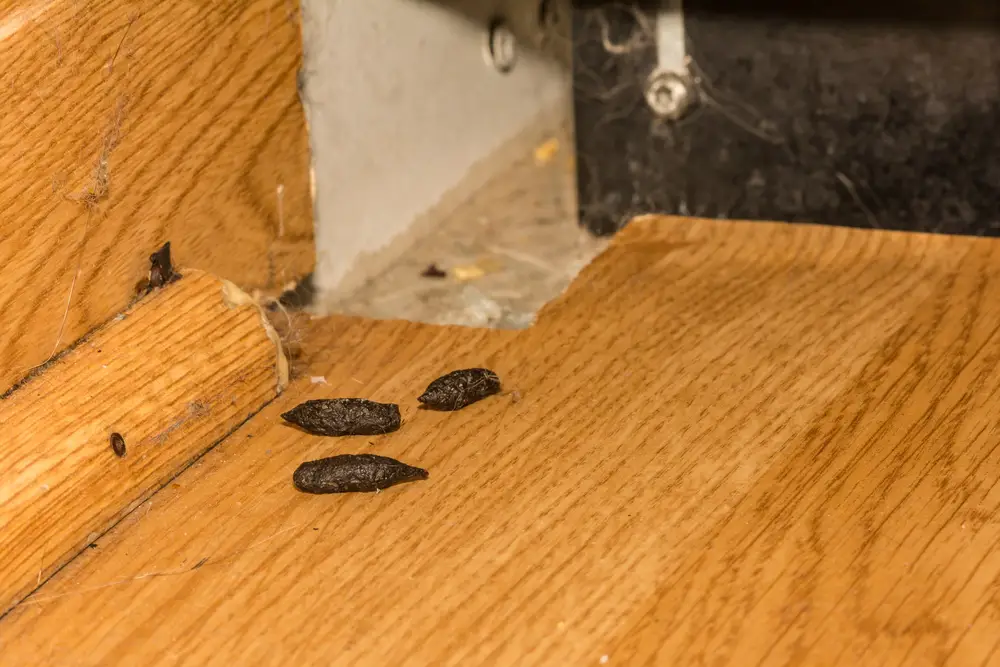
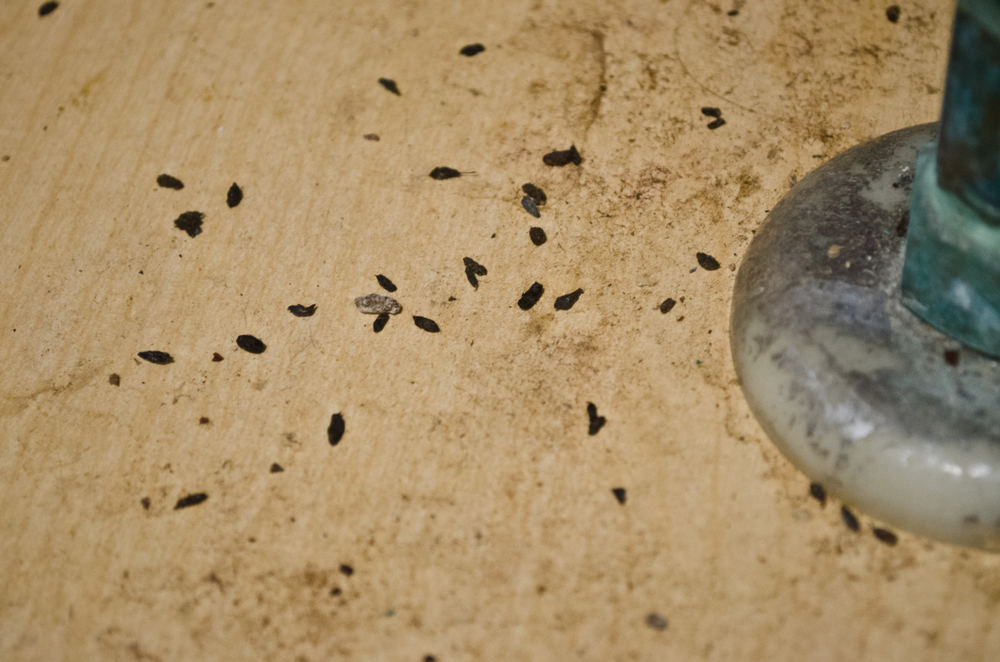
Are Rat Droppings Harmful?
Yes, anyone who touches rat droppings and fails to sanitize can develop life-threatening diseases. One such disease is the hantavirus disease. This is a life-threatening respiratory illness that can be contracted by being in a non-ventilated area with rodents.
This can cause lung and heart problems, and there is no cure for this disease. The main mode of transmission of this disease is inhalation. So, if you find rat droppings in your home, make sure to open a window and ventilate the area before you clean.
What Should I Do if I Find Rat Poop?
Taking precautionary measures when dealing with rat feces is crucial to keeping your health and well-being in check. The best way to clean up rat poop is by following these steps:
- Wear latex, rubber, or vinyl gloves before cleaning the poop.
- Don’t mix rat poop with other materials.
- Spray disinfectant or bleach-water solution.
- Allow 5 minutes for the droppings and urine to soak.
- Pick up the droppings with a paper towel or wet wipe.
- Wash your hands thoroughly afterward.
- Mop or clean the affected area with a rug or disinfectant.
- Wash bed sheets with hot water and laundry detergent.
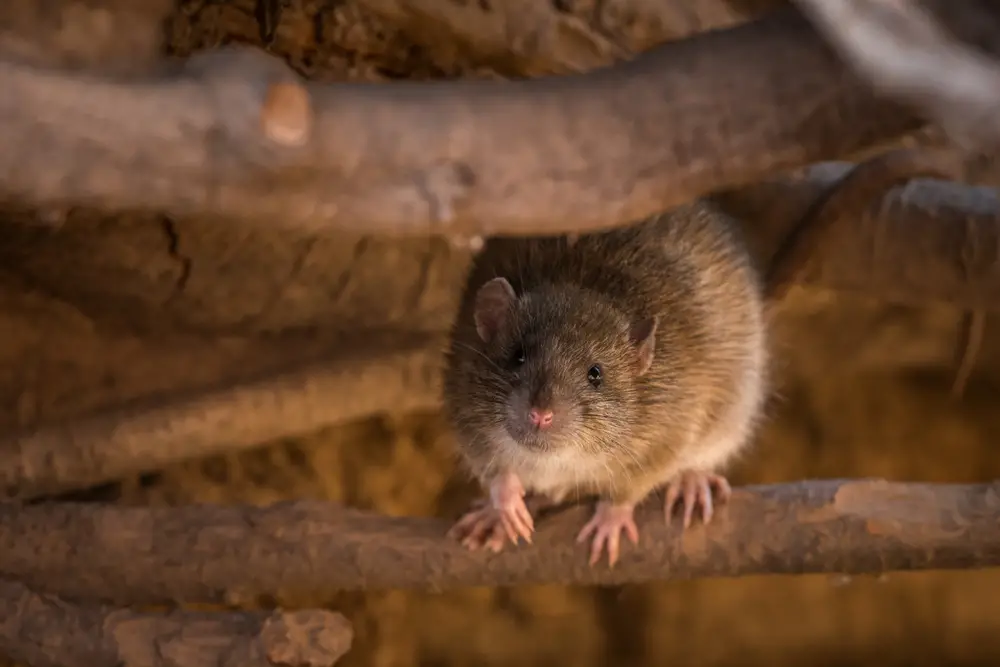
Then, once you’ve dealt with the feces, it’s time to get rid of roof rats and Norway rats themselves. And the best way to do that is by calling a professional pest control company that can help you seal the entry points for rat control measures.
Homeowners can also employ DIY strategies, such as baiting and setting up live rat traps. However, if you a solution that doesn’t put your health at risk, it’s best to call in professionals for rodent control.

